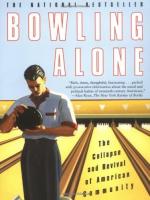
|
| Name: _________________________ | Period: ___________________ |
This test consists of 15 multiple choice questions and 5 short answer questions.
Multiple Choice Questions
1. When was the Great Awakening?
(a) 1730-1760.
(b) 1900-1920.
(c) 1812-1830.
(d) 1640-1670.
2. At one time, whom did they want to rename the LAX airport after?
(a) Bing Crosby.
(b) Clint Eastwood.
(c) Jimmy Stewart.
(d) James Cagney.
3. In 1940, what was one of the poorest cities in the poorest state in the United States?
(a) Calhoun City, Mississippi.
(b) Bessemer, Alabama.
(c) Tupelo, Mississippi.
(d) Anniston, Alabama.
4. What percent of the decline of engagement might have been caused by electronic entertainment:
(a) 41.
(b) 34.
(c) 25.
(d) 18.
5. Who was the first American Nobel Laureate for literature?
(a) Sinclair Lewis.
(b) Pearl Buck.
(c) George Bernard Shaw.
(d) Thomas Mann.
6. In 1998, what percent of American adults were married?
(a) 56.
(b) 45.
(c) 37.
(d) 61.
7. In 1999 how many sixth-graders had a TV set in their bedroom?
(a) 64 percent.
(b) 51 percent.
(c) 48 percent.
(d) 77 percent.
8. Which state had the highest rate of murders?
(a) Mississippi.
(b) Florida.
(c) Alabama.
(d) Louisiana.
9. In 1959, how many American homes had television?
(a) 80 percent.
(b) 85 percent.
(c) 75 percent.
(d) 90 percent.
10. How many men born in the 1920s served in the military?
(a) 70 percent.
(b) 75 percent.
(c) 85 percent.
(d) 80 percent.
11. When was Charles Tilly born?
(a) 1898.
(b) 1931.
(c) 1928.
(d) 1913.
12. In 1998, what percent of adults had children at home?
(a) 38.
(b) 41.
(c) 58.
(d) 23.
13. When were Americans born who were the most engaged or tolerant?
(a) 1930-35.
(b) 1960-65.
(c) 1950-55.
(d) 1940-45.
14. How much would an individual's chances of poor health increase if he moved from a state with a wealth of social capital to a state with little social capital?
(a) 20-30 percent.
(b) 15-20 percent.
(c) 40-70 percent.
(d) 50-60 percent.
15. What American president called groups organized around particular interest or passions "mischiefs of faction"?
(a) Andrew Jackson.
(b) George Washington.
(c) John Adams.
(d) James Madison.
Short Answer Questions
1. If someone belonged to no groups, but decided to join one, how much would he cut his risk of dying over the next year?
2. In 1870, how many miles were there in the nationwide rail network?
3. In what pastoral state did attendance at town meetings fall by nearly half between the early 1970s and the late 1990s?
4. What book by William Julius Wilson written in 1987 did Putnam mention in Chapter 18?
5. In the novel "Babbit," where did the main character live?
|
This section contains 341 words (approx. 2 pages at 300 words per page) |

|




